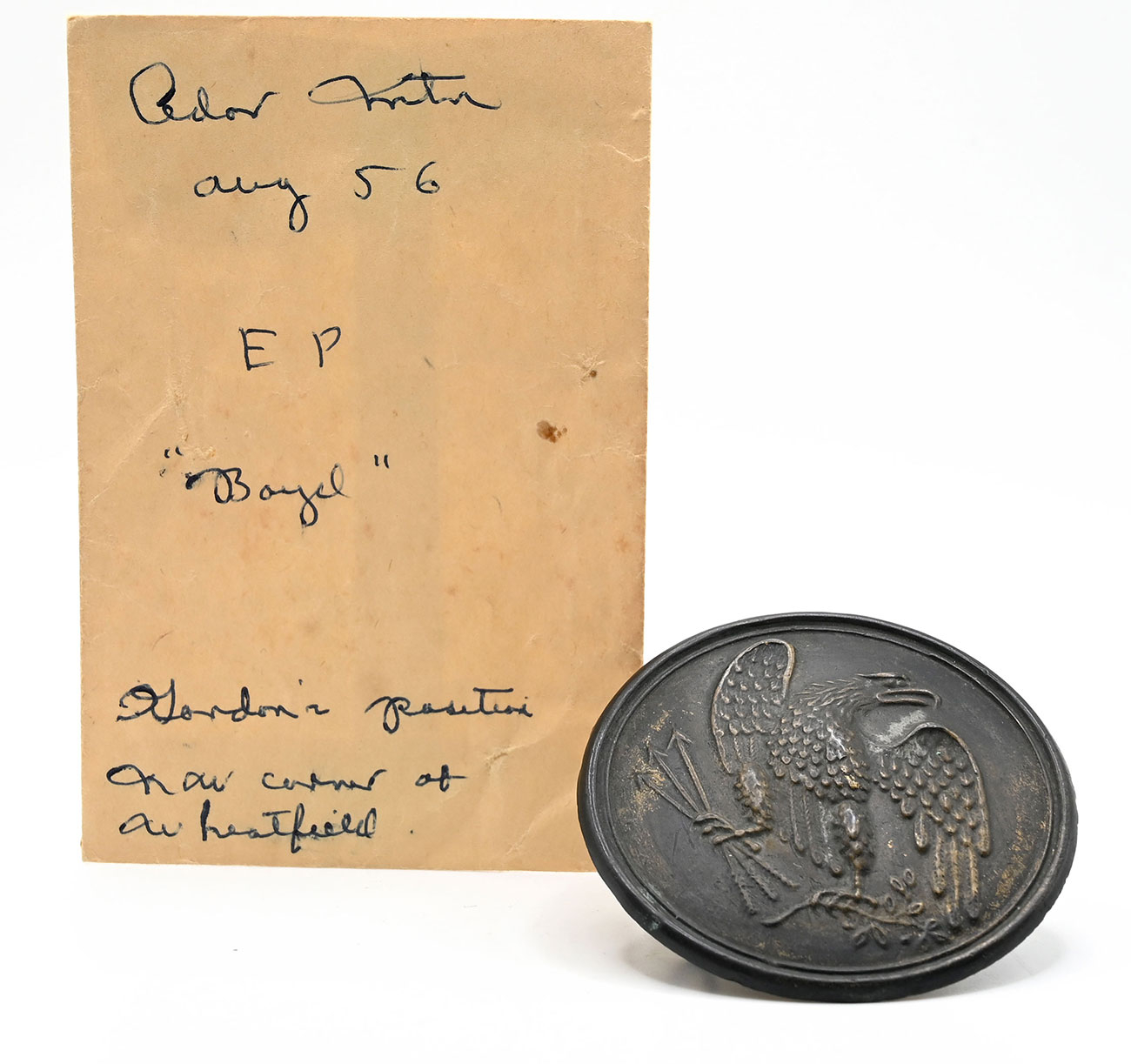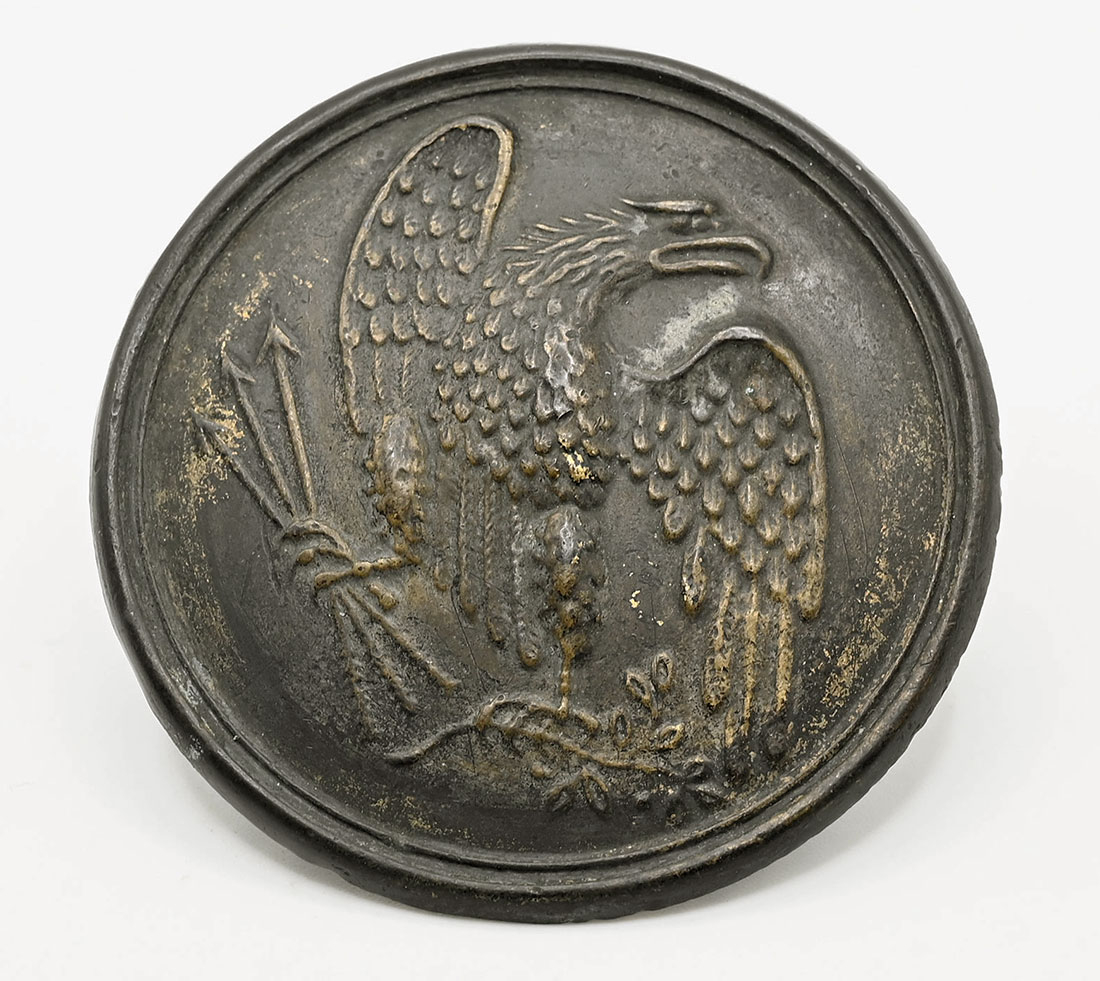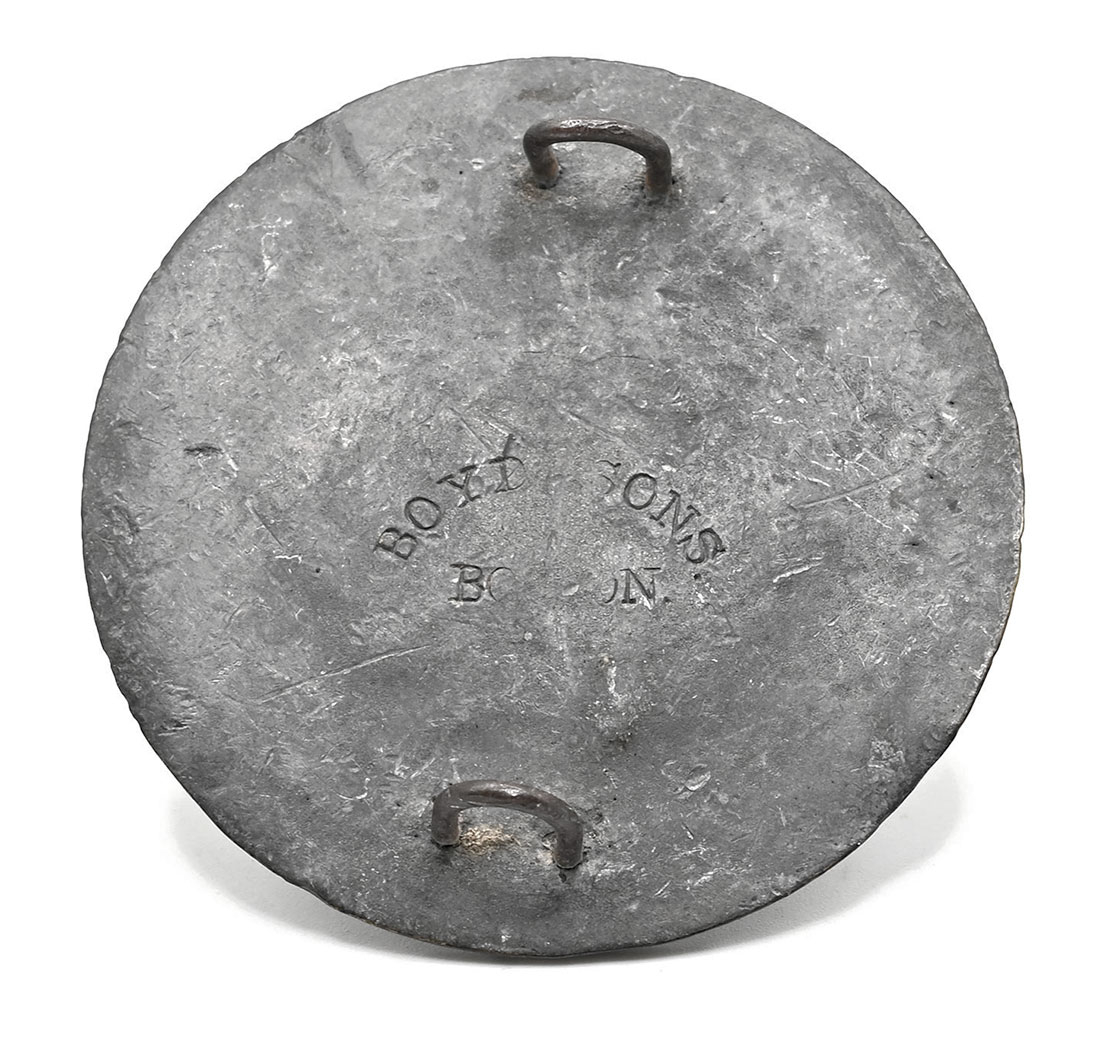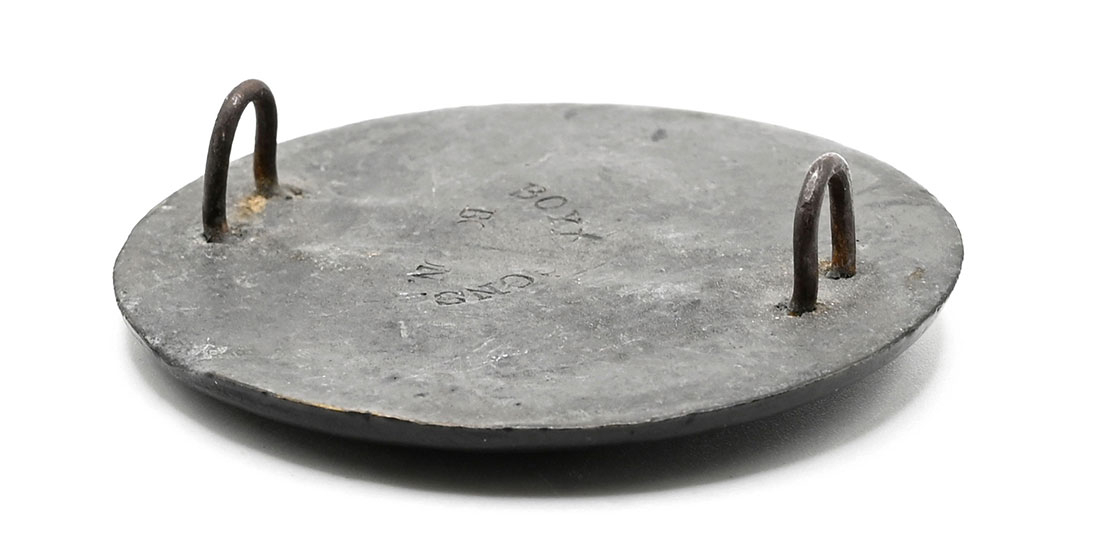site search
online catalog
CARTRIDGE BOX BELT PLATE FROM CEDAR MOUNTAIN RECOVERED BY SYD KERKSIS AUGUST 1956

Hover to zoom




$575.00 SOLD
Quantity Available: None
Item Code: 2025-1390
Syd Kerksis was one of the real pioneers in Civil War collecting with books on military belt plates and projectiles that are still useful references. This comes in his original storage envelope for it on which he noted it as an “EP” (eagle plate) marked “BOYD,” along with the find location as “Cedar Mtn,” the date “aug 56,” and the specific location as, “Gordon’s position / NW corner of / Wheatfield.”
This has an excellent rim and very good definition to the US eagle with arrows and olive branch, showing a thin, gray-green patina overall with some of the highpoints showing a muted gilt brass as well as an area at left near the tips of the arrows and at lower right. The lead solder fill on the back is very even and shows a mix of silver and darker grays. The wire loops are in place, upright, and show just minor corrosion. The center of the back is clearly stamped, “BOYD & SONS” in an arc over “BOSTON,” with the stamping showing rubbing in the center of each line, but the rest of the lettering very crisp and sharp. The company was a major supplier to the US government.
Cedar Mountain, fought August 9, 1862, marked one of the few times Stonewall Jackson got in real trouble, albeit briefly, when Nathaniel Banks sent his infantry forward with unexpected promptness. The wheatfield was located north of the Orange-Culpeper Road and was the scene of fierce fighting between Confederates under Garnett and Ronald, commanding the old Stonewall Brigade, and Union troops under Crawford, who pushed the Confederates back until they were rallied by Jackson personally and regained the initiative. “Gordon’s position” refers to Union Brigadier General George H. Gordon, who in the later and crucial stages of the fighting advanced to shore up the Union right flank and for a time held off elements of several Confederate brigades until he himself was outflanked.
These plates were adopted in 1826 with hooks on the reverse for the bayonet shoulder belt and made of brass for artillery and white metal for infantry. This was changed to brass for both services in 1831 and when the bayonet was moved to the waist belt around 1842, the plates were redesigned with two loops on the back for wear as fixed ornaments on the cartridge box sling and plates with hooks were relegated to the NCO and musician’s sword shoulder belts. (Some militia versions used hooks at a different angle for wear on the waist belt.) Although in theory the plate was dropped with introduction of the 1864 cartridge box rigs with no plates, the plate remained in use in the field and was not discontinued until the new 1872 sets of accouterments were distributed.
This is a very strong example, maker marked, recovered on a significant battlefield, and with a tight provenance to a major, early collector and collection. [sr][ph:L]
~~~~~~~~~~~~~~~~~~~~~~~~~~~~~~~~~~~
THIS ITEM, AS WITH ALL OTHER ITEMS AVAILABLE ON OUR WEB SITE,
MAY BE PURCHASED THROUGH OUR LAYAWAY PROGRAM.
CLICK HERE FOR OUR POLICIES AND TERMS.
THANK YOU!
Inquire About CARTRIDGE BOX BELT PLATE FROM CEDAR MOUNTAIN RECOVERED BY SYD KERKSIS AUGUST 1956
Most Popular
Historical Firearms Stolen From The National Civil War Museum In Harrisburg, Pa »
Theft From Gravesite Of Gen. John Reynolds »
Selection Of Unframed Prints By Don Troiani »
Fine Condition Brass Infantry Bugle Insignia »
featured item
UNITED CONFEDERATE VETERANS PAINT-DECORATED DRUM- C.S. NATIONAL FLAGS, SHIELD, LIBERTY CAP; MOUNTED WITH PHOTO OF DRUMMER; WITH DRUMSTICKS
The drum is a rod tension snare drum 12 inches tall and 16-1/2 inches in diameter. The rims, heads, and screw tightened snare are intact and in place, with the snare showing just two or three loose strands. The 8 tightening rods with screw adjusted… (2025-54). Learn More »


